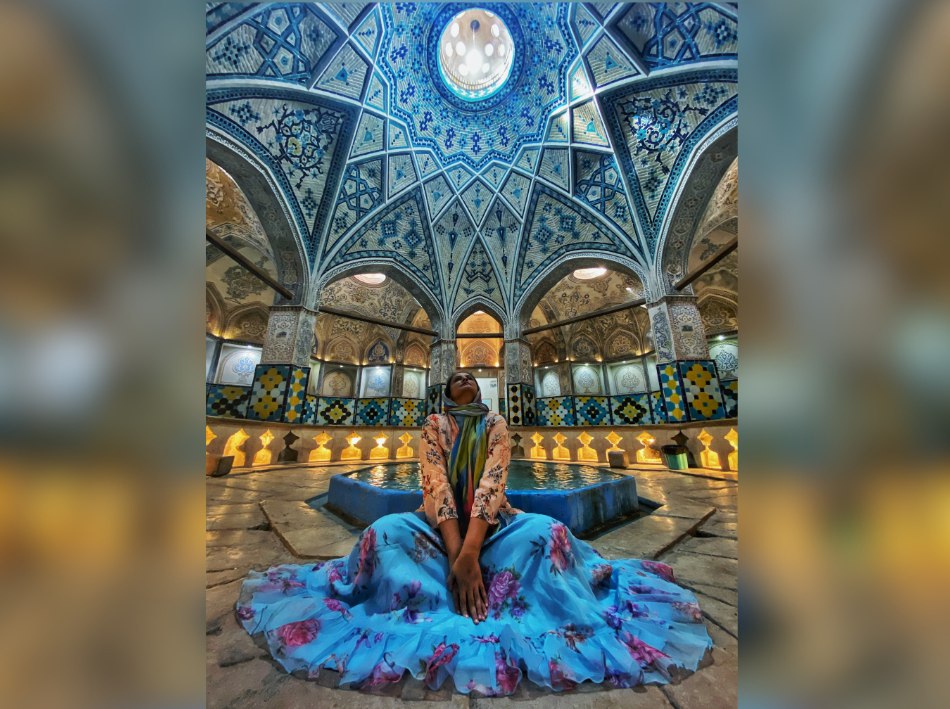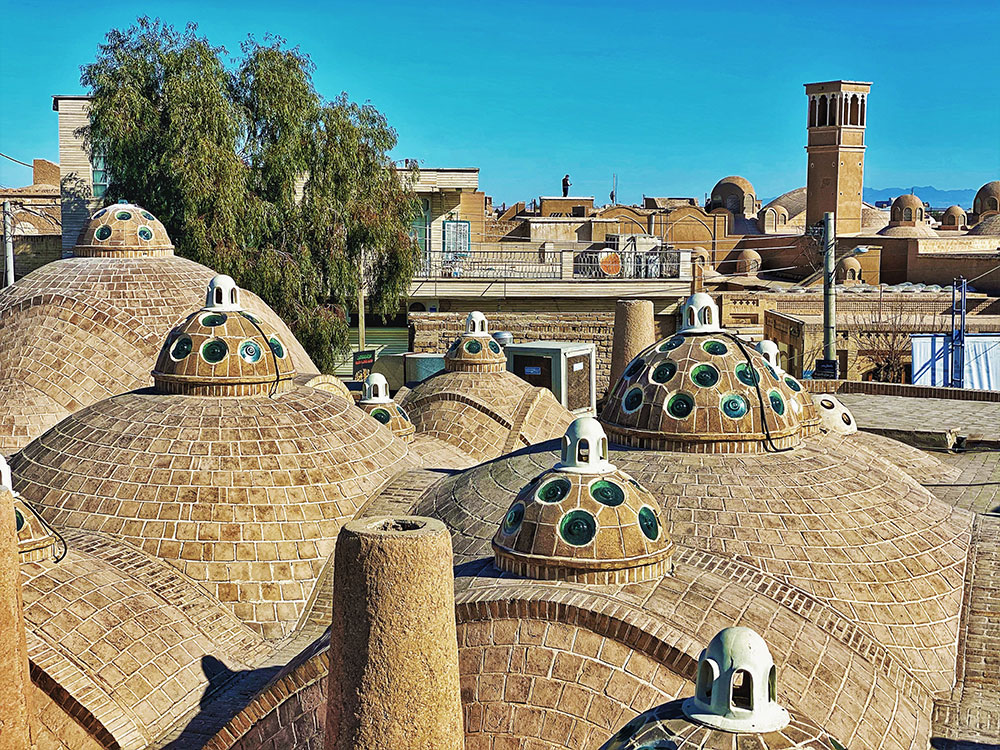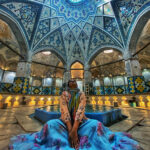
Sultan Amir Ahmad Bathhouse is as good an example of all that it took to make a grand bathhouse
The art of cleansing oneself with water, soap and bubbles is a ritual we perform every day, yet it never gets old. If you trace back the history of bathing, each civilisation had its own style, be it the Harappa-Mohenjo Daro, Egyptian or Mesopotamian civilisations. In many of these and more recent places, bathhouses have tales of their own to tell.
As an architect, I enjoy designing bathrooms the most. Well- designed bathrooms are a place of comfort. So naturally, I was drawn to bathhouses in the small town of Kashan in Iran’s Isfahan Province, where people could bathe inside a kaleidoscope!
Fans of lavish architecture and intricate stuccoworks will definitely want to visit Kashan. This small Iranian city, about 250 km south of capital Tehran, is known as the “Mansion Town” thanks to its abundance of stunning traditional mansions, built by wealthy merchants and aristocrats during Kashan’s heyday as a commercial hub along the Silk Road.
These homes, built in the 16th-18th centuries, were the ultimate status symbols, showcasing the owners’ taste for luxury and serving as hotspots for cultural and social gatherings. Not only the homes and their guest rooms or bedrooms, but the merchants also paid great attention to the design and appeal of the bathhouses.
Those days, every self-respecting city in Persia had to have five key elements. A mosque, a bazaar, a house (or three), a bathhouse, and a cistern to keep things flowing. What good is a city without a proper place to wash away the grime and troubles of the day?

Sultan Amir Ahmad Bathhouse makes visitors dream of what the experience of having a hot steam bath here would have been like
That’s where the Sultan Amir Ahmad Bathhouse comes in. Some say it dates back to the Seljuq Dynasty in the 11th century, while others speculate it is a makeover of a previous bathhouse destroyed by an earthquake during Qajar Dynasty in late 18th or early 19th century. Either way, the bathhouse has stood the test of time and makes visitors dream of what the experience of having a hot steam bath here would have been like.
Though normally, at least today, bathrooms are all about functionality, with focus on essentials like the water flow, steam circulation and drainage system.
But in the bygone days, bathhouses, at least of the wealthy and the royalty, were much more than that, a living space where one spent a considerable amount of time and hence attention was paid to many other factors, besides the technical stuff. Sultan Amir Ahmad Bathhouse is as good an example of all that it took to make a grand bathhouse. Even today, it is evident that equal weightage was given to its décor and ambience as well as its technical specifications.
Simply put, it is an architectural masterpiece, with its lime, turquoise, and golden tiling catching the eyes first!
The seven-layer fascia and anaglyph engraving makes the experience similar to having a kaleidoscope dream. The arch- like ceilings with their intricate mosaics and immense wall paintings, that seem to cover all the walls around here, does make one feel like a Queen.
Even though today one cannot have the royal experience of the bygone era of soaking in steam in this gorgeous bathhouse, so amazing is the overall feel that one ends up spending far more time inside than one would have planned on!
The interiors
The view is rather plain as you enter the building through a narrow vestibule. It is the usual wall with light peach gypsum plaster. At the end of the vestibule lies the first wonder, the Sarabineh or changing room, which has a ceiling that looks like an inverted flower full of various shades of turquoise mosaics. Here, the walls have a similar decor, but yellow tiles and dark turquoise blue add beauty to the place.
The next room is Garmkhane, where actual washing and cleansing took place. This room also comes with its own beautiful multicoloured fancy ceiling with mosaics, though my favourite remained the Sarabineh.
Once I was done with living in a dream inside, I headed to the terrace, which has a cluster of smaller domes with coloured glass on them. The dome’s design allows natural light to filter in, casting a beautiful glow throughout the bathhouse and creating a tranquil ambience.
And the sight from that terrace can teleport visitors to the era where the bathhouse was actually in use. The entire city bears a neutral beige shade and Persian Wind Catchers and the mosque’s dome dominate the town’s silhouette. To the west, Mount Ardehaaland to the southwest Mount Gargashstand in resplendent glory, with their snow-capped peaks that add to the magic of the place. The view here seems too perfect to be real!
Though Isfahan boasted of countless bathhouses in the Safavid era in the period 1501–1736, only a few exist today. But no other bathhouse in Isfahan or even entire Iran is as kaleidoscopic as Sultan Amir Ahmad Bathhouse, which was inscribed on the Iranian national heritage list in 1976. The residents of Kashan realise the value of the gem that they have been blessed with and try to maintain it in the best possible manner.

The entire city bears a neutral beige shade and Persian Wind Catchers and the mosque’s dome dominate the town’s silhouette
Entrance fees and timings
Iran is one of the most affordable nations for travellers. The entry fee to this glorious monument is only about IRR 200,000 or INR 400. As Kashan has dozens of other things to offer to tourists, buying a combo ticket with four other mansions and this bathhouse for less than INR 1200 is better.
How to get there?
Kashan is easily reachable by bus, leaving from Tehran Terminal almost every 30 minutes until night. If you are in the mood to take pit stops on your journey and want more comfort, affordable taxis from Tehran are a way to go to Kashan. There are some trains, too, but they take longer and can be delayed.

















